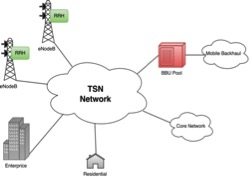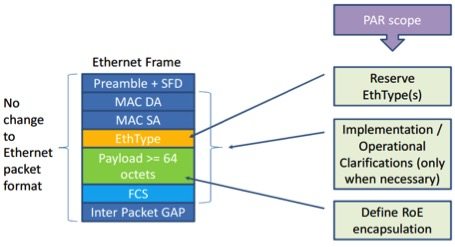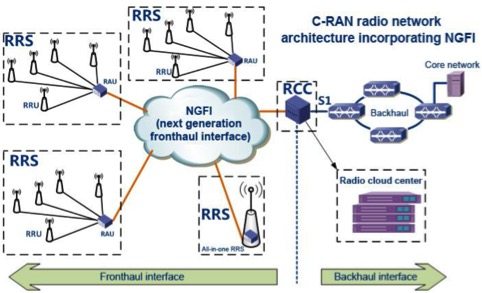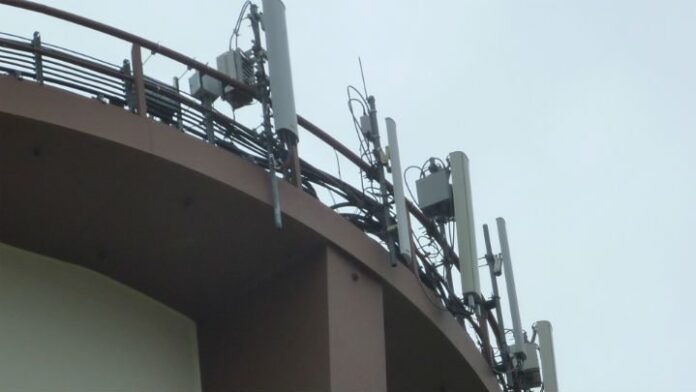Xilinx and Comcores look at fronthaul challenges as the mobile telecom market transitions to 5G technologies
In a connected world, mobile networks will have to evolve to support a larger, increased number of devices and services that overall contribute to the exponential traffic growth toward “5G.” To address data demand, base station architectures will evolve with centralized and virtualized radio access network architectures forming the mobile networks of the future. These networks will be sustaining more capacity as well as network flexibility and scalability with a more generic hardware footprint. In particular, the connection between baseband and radio elements – known as fronthaul – will be highly impacted.
Common public radio interface has been the de facto standard for point-to-point fronthaul transport for macro base stations, but its bandwidth and flexibility limitations are driving a rethinking on this critical connectivity interface.
To address the fronthaul challenge, a number of activities recently emerged in the Institute of Electrical and Electronics Engineers standardization consortium and have gained significant interest from all of the key industry players. The aim of such initiatives is to define an Ethernet-based fronthaul network that addresses the capacity and flexibility limitations along with timing and synchronization challenges of radio networks.
Background
Ethernet technology has demonstrated steady, cost-efficient speed and capacity growth driven by the enterprise, access and data-center markets. Standardization activities under IEEE aim to take advantage of Ethernet developments and specify a scalable and streamlined packet based radio interface solution.
Motivation
Packet-switched networks provide widespread deployment and an ability to carry numerous services. In comparison to a traditional CPRI over fiber connection, significant savings in capital expense and operating expense can be achieved. Nevertheless, operators are faced with a new challenge as they look for ways to move away from CPRI – the packetized networks are nondeterministic and lack precise time synchronization, which is inherent and required for CPRI.
Overview of TSN
One potential is use of highly accurate clock distribution and time sensitive networking services in order to fulfill the strict requirements of the future mobile fronthaul networks. In IEEE 802.1, the TSN Task Group is currently working on a set of standards aiming to allow time-synchronized, low-latency high-bandwidth services over Ethernet networks.
Figure 1 illustrates the concept of using a packet-switched network as the underlying transport network for the fronthaul. As shown, the packet-switched network is used not only as a fronthaul, but also as a metropolitan area network.

Figure 1 – Conceptual diagram for a packet-switched network for fronthaul
The challenge is being able to service deterministic radio data streams between remote radio heads and the baseband unit pool without being adversely affected by unrelated background traffic. As such, the network must be able to orchestrate data streams at a frame-level resolution. Such procedures are offered by TSN with frame preemption, enhancements for scheduled traffic and stream reservation protocol.
Radio over Ethernet
While TSN is designed to ensure timely reception of time sensitive packetized streams, it does not deal with the encapsulation of CPRI and similar RRH-BBU communication. This is instead being developed by the IEEE 1904 Access Networks Working Group. The work targets, among others, definition of a native radio over Ethernet encapsulation and maps transport format for both digitized radio payload (IQ data) and management and control data. The Ethernet packet format itself is not changed and neither is the MAC under this project authorization request, as shown.

Figure 5 – RoE encapsulation overview – Ethernet Packet remains unchanged
Several use cases of RoE can be considered, such as aggregation of several CPRI streams from a number of RRH to a single RoE link to the BBU pool, or a native edge-to-edge RoE connection from the RRH directly to the BBU pool. RoE will naturally add a new switching/aggregation node between the baseband pool and the radio resources.
Next-generation fronthaul interface
While ROE is for encapsulation of CPRI and similar RRH-BBU communication, it does not address the shortcoming of CPRI, namely low-efficiency, inflexibility and poor scalability. To support key technologies for both “4.5G” and 5G, a rethink is required. The new technology must support traffic-dependent configuration, support statistical multiplexing, support cell coordination, be antenna independent and have radio interface technological neutrality. NGFI is claiming to be that technology and the key lies in the function split ,again between the BBU and the RRU, with the underlined transport network based on packet switching as shown.

Figure 8 – C-RAN Radio Network Architecture based on NGFI
Under NGFI, some of the processing functions are shifted to the RRUs. Such a change allows the fronthaul interface to move from a point-to-point connection to a multipoint-to-multipoint enabled lower bandwidth fronthaul and allows for advance features such as bandwidth adaptation in response to dynamic payload variation and maximum support for high-gain coordinated algorithms while at the same time allowing for decoupling of interface traffic from the number of antennas. This way NGFI is capable of supporting current air interfaces as well as future interfaces based on 5G technologies.
Conclusion
As covered, a number of standardization efforts are underway under the supervision of the IEEE and elsewhere. Standardization efforts generally take several years to finalize and be fully adopted.
As data demand continues to accelerate on the mobile infrastructure, the technical challenges with fronthaul becomes more severe, leading to several industry standardization taskforces and working groups to come up with innovative, flexible and cost-efficient solutions. TSN, ROE and NGFI are complementary industry efforts aimed at addressing the technical challenges and lowering the deployment cost of fronthaul networks. Significant challenges in ensuring deterministic traffic scheduling, packet encapsulation and radio level synchronization must be overcome for these efforts to succeed.
Editor’s Note: In an attempt to broaden our interaction with our readers we have created this Reader Forum for those with something meaningful to say to the wireless industry. We want to keep this as open as possible, but we maintain some editorial control to keep it free of commercials or attacks. Please send along submissions for this section to our editors at: dmeyer@rcrwireless.com.

